Efficient Wastewater Treatment Solutions for the Pulp and Paper Industry
For pulp and paper mills, wastewater treatment costs directly impact the unit cost of pulp and paper products. High energy consumption in wastewater treatment leads to increased operational expenses and reduces market competitiveness. In light of the national mandate to reduce carbon emissions, ensuring stable compliance of wastewater treatment plants while improving energy efficiency is of paramount importance.
Case Study: A Leading Paper Mill in Zhejiang.This case study examines the wastewater treatment process of a paper mill in Zhejiang, which operates four production lines with a total annual capacity of 1.35 million tons:
PM11: 450,000 tons/year of high-strength kraft paper line
PM12: 200,000 tons/year of corrugated paper line
PM13: 600,000 tons/year of coated white kraft paper line
PM15: 100,000 tons/year of recycled corrugated paper line
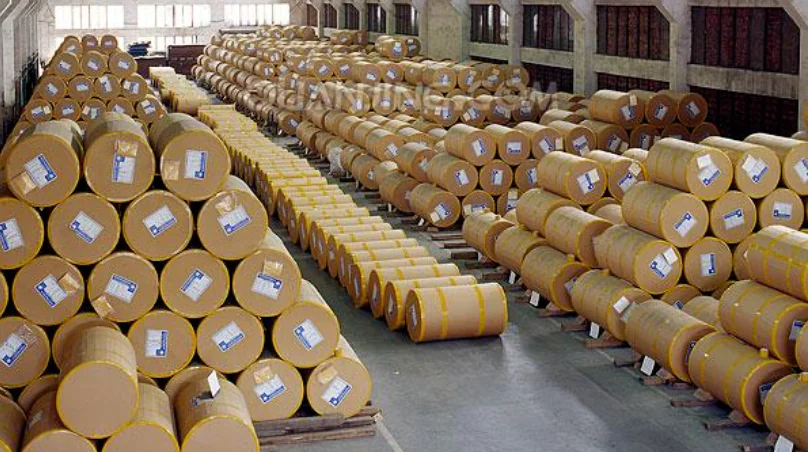
Wastewater Treatment Process
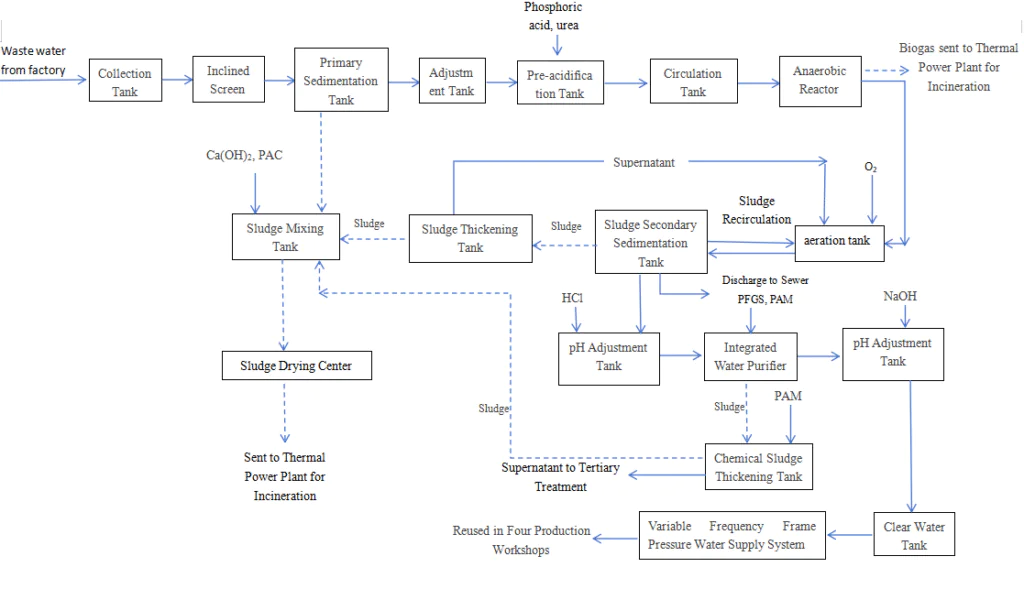
Description of sewage treatment process
The sewage treatment adopts anaerobic+aerobic treatment+reclaimed water reuse treatment methods. The anaerobic system adopts advanced IC (internal circulation) anaerobic reactor technology in terms of process and equipment. Due to the good and stable mixing effect inside the reactor, the treatment load is high, and it can tolerate a wide range of load fluctuations while maintaining stable treatment efficiency. The aerobic treatment adopts the activated sludge method with stable treatment effect and easy operation. The treatment process mainly includes pretreatment, anaerobic treatment, aerobic treatment, reclaimed water reuse, biogas treatment, and sludge treatment. The specific process introduction is as follows.
(1)Pre-Treatment
Before entering biological treatment, production wastewater is first collected and suspended solids are removed. The production wastewater is discharged through the wastewater discharge pipeline and enters the collection well after passing through two mechanical grilles. The purpose of setting up a mechanical grille is to remove large pieces of waste paper, plastic sheets, and other debris that have not been broken, in order to protect subsequent rotating equipment. A liquid level gauge is installed in the collection well to continuously monitor the liquid level and control the start and stop of the lifting pump.
The wastewater in the collection well is lifted by the inlet lift pump to a 60 mesh inclined filter screen. The inclined filter screen is used to further remove large debris such as plastic sheets, paper sheets, large fibers, etc. After being filtered through a diagonal mesh, most of the SS (mainly lost fibers) can be removed, and the suspended solids removed are selected and reused. The wastewater flows into the primary sedimentation tank after removing some SS through a diagonal filter screen, and the SS in the wastewater settles by gravity in the primary sedimentation tank. The primary sedimentation sludge is collected by a scraper in the primary sedimentation tank to the middle of the tank bottom, and is directly transported by a sludge pump to the sludge mixing tank for treatment after mixing with the sludge in the secondary sedimentation tank. The effluent from the primary sedimentation tank flows automatically into the regulating tank to regulate the water quality and fluctuations of the wastewater, providing approximately 4 hours of hydraulic regulation time. The regulating tank is equipped with a submersible mixer to mix the water evenly and prevent solid particles from settling. The suitable biochemical reaction for mesophilic anaerobic is between 34-40 ℃, while the highest raw water temperature can reach 48 ℃. In order to achieve stable operation of the biological reaction, a water temperature regulating device is needed. The wastewater mixed uniformly in the regulating tank is lifted by the cooling tower feed pump to the cooling tower for cooling, and then flows into the pre acidification tank by gravity, providing good environmental conditions for the subsequent anaerobic reaction. Two submersible agitators are installed in the pre acidification tank to thoroughly mix the wastewater and prevent solid particle precipitation. To ensure the normal progress of pre acidification and subsequent biological reactions, nutrients (nitrogen and phosphorus) required for biochemical reactions are automatically metered and added in the pre acidification tank.
| Item | Water treatment capacity(m3/d) | TCOD(mg/L) | TSS(mg/L) | TCOD Removal rate | TSS Removal rate |
| Capacity | 55000 | 3000 | 1500 | 30% | 50% |
Design parameters for physical and chemical pretreatment section
(2) Anaerobic Treatment
A two-stage anaerobic process is utilized
*Pre-Acidification Tank: Partial acidification occurs before entering the IC (Internal Circulation) anaerobic reactor.
*IC Reactor: Converts most organic pollutants into biogas, ensuring high efficiency and process stability. The generated biogas is collected and directed for power generation.
| Item | Inlet COD(mg/L) | Outtter COD(mg/L) | Volumetric load(kgSCOD/m3.d) |
| Capacity | 2000 | 800 | 17.2 |
(3) Aerobic Treatment
The effluent from the IC reactor undergoes activated sludge treatment, where remaining organic matter is converted into CO2 and H2O. Key processes include:
Aeration Tank: Using jet aeration for efficient oxygen transfer.
Secondary Sedimentation: Separates sludge from treated water. Some sludge is recycled to maintain biomass concentration, while excess sludge is sent for dewatering.
| Item | TCOD Removal rate | Outtter COD(mg/L) | Outter SS (mg/L) | pH value |
| Capacity | 85% | 200 | ≤70 | 6-9 |
(4) Water Reuse System
Treated water undergoes further clarification and filtration to meet reuse standards:
Chemical Treatment: Flocculants and coagulants remove residual organic matter and color.
Advanced Filtration: Ensures high-quality recycled water for reuse within the mill.
Supply System: A variable-frequency, constant-pressure system efficiently delivers treated water to production lines.
| Item | TCOD Removal rate | Outtter COD(mg/L) | Outter SS (mg/L) | pH value |
| Capacity | 40% | ≤100 | ≤20 | 6-9 |
(5) Biogas Utilization
IC reactors generate 35,000 m³/day of biogas, which is collected, stabilized, and used for power generation, improving energy efficiency and reducing emissions.
(6) Odor Control
Two odor treatment systems capture and incinerate gases generated during wastewater treatment, ensuring a cleaner environment.
(7) Sludge Treatment
The fibers recovered by the inclined filter screen are transported by a belt conveyor to the slurry pool and lifted by the slurry lifting pump to the production workshop for reuse treatment. The primary sedimentation sludge, secondary sedimentation tank sludge, and chemical sludge from wastewater treatment need to be collected, and the sludge concentrated in the sludge concentration tank will be continuously discharged into the sludge mixing tank. The sludge is pumped into the sludge dewatering system by a sludge feeding pump from the sludge mixing tank for dewatering treatment.
Key Chemicals Used in Wastewater Treatment
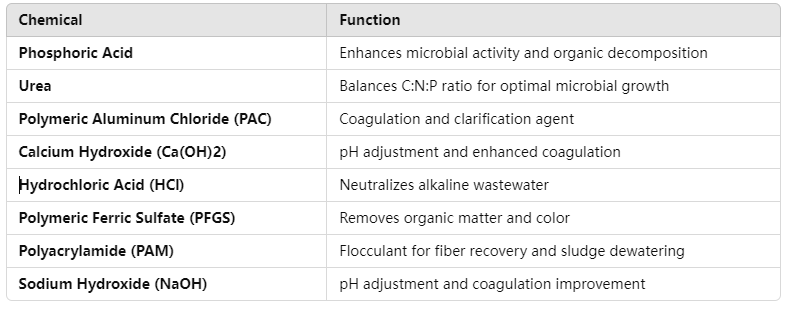
The Power of PAC & PAM in Wastewater Treatment
Selecting the right chemical agents is critical for effective wastewater treatment. PAC and PAM play vital roles in ensuring high efficiency and cost-effectiveness:
PAC: An advanced inorganic polymer coagulant with strong decolorization and flocculation effects, particularly effective for high-color and high-turbidity paper mill wastewater.
PAM: Provides superior flocculation and sludge dewatering performance, reducing chemical dosage and improving overall treatment efficiency.
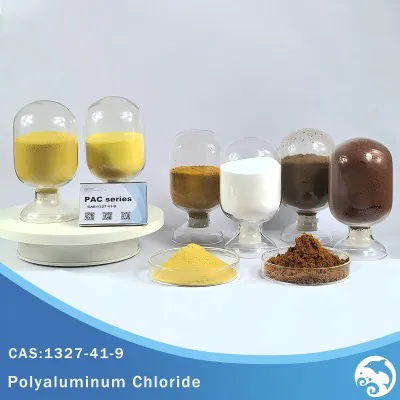
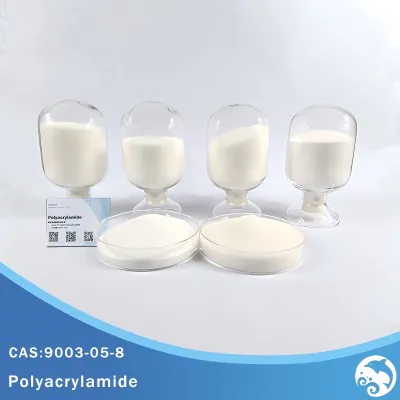
Why Choose Our PAC & PAM Products?
As a leading provider of water treatment chemicals, we offer premium-quality PAC and PAM tailored to meet the unique challenges of the pulp and paper industry:
High-purity PAC: Fast dissolving, ideal for complex wastewater conditions.
Comprehensive PAM solutions: Available in anionic, cationic, and non-ionic forms to suit different treatment processes.
Proven Performance
In a recent case study, a major paper mill implemented our PAC & PAM products, achieving:
30% increase in COD removal efficiency
70% reduction in color
15% reduction in chemical consumption, significantly lowering operational costs
Contact Us for Customized Solutions
If you are looking for high-performance, environmentally friendly wastewater treatment solutions, our PAC and PAM products are your ideal choice. Contact us today to learn more about our offerings and how we can help optimize your wastewater treatment process.
Together, let’s create a greener and more sustainable future!
